ECC 142 PLAR Competency Functions
1. Working with the staff the student helps create and maintain a safe and healthy environment for children by:
Safe + Healthy = Play to Learn
J.P.B
At my centre, our environment has many comfort levels for all of our children. I am proud to share with you one of our comforts we provide is a security blanket feeling around our children for them to feel safe and another comfort is the relationship we built together with our indoor/outdoor surroundings of our environment to become a third teacher for our children A beautiful blend for a safe and healthy play to learn environment.
When we are able to provide and offer a safe and healthy environment we are able to amplify the child’s love for play and their love for learning through exploring, experiencing, wondering, inquiring, cooperation and scaffolding, and creative collaboration.
Creating a positive learning environment for our children we not only look at the physical structure of our centre we also look at all the elements that are within our organized spaces/zones/areas.
Our centre – through the lens of development of the whole child our indoor and outdoor spaces/zones/areas are:
– responsive to all children’s and individual child needs
– appropriate to explore all developmental domains and all 5 senses
– interesting and provide learning opportunities
– a reflection of diversity, gender, and ability, family and culture
– caring, warm and provide comfort and security
– supplied with a variety of beautiful materials and experiences for our child
– meeting the child care licensing regulation and child care safety documents
– clean, fresh air flow, nature light,
– all supplies, crafts, games, loose parts etc. are available and organized with young children in mind
– creating opportunities for children to explore all 5 domains and all 5 senses
– atheistically pleasing to the eye and are calming for the young child’s brain
– encouraging conversations and play
– appropriate or modified for a child’s individual and unique behavioural challenges for the child to be successful in developing and learning
– open for group play, provide areas for small group play, areas for the 2 of us and areas for parallel and solitary play
– providing connections to nature elements
– offering a safe risk taking area
– encouraging fantasy and imaginative play
– supporting running, climbing, hopping, jumping, huff and puff play
Here at our centre we strive to provide and offer spaces/zones/areas including a quiet area, nature zone, group active zone, exploration zone, imaginative space, active zone, trail zone, creative/art space, music zone, kitchen space, water and sand table areas and circle time space. When designing our spaces/zones/areas we take into consideration the transition efforts for the children moving from one activity to another, do they flow together allowing the children a sense of continuation rather than interruption. We continuously evaluate our design of our indoor and outdoor environments to provide a safe, heathy and learning environment where all the children and staff/educators can explore, experiences, create, learn, and express themselves. We routinely inspect the condition of all our materials, supplies, toys, games, tools, loose parts, equipment, play structures, water and sand tables etc. to make sure they are safe for the children to engage in.
Throughout the school year we practice our fire drill once a month, our earthquake and wildlife (bear and courage) drills alternating once a month, and our hold and secure and lockdown drills twice a school year. It is extremely important to us that all of our staff/educators and children, and their families when present, have an understanding of what our drill safety procedures are about. First we take our time to explain to our “children we are going to practice our eg. fire drill today,” while sitting in a comfort circle together on the carpet/grass. We the teachers ask questions to open up the conversation with the “5w’s and how” concept – who, what, when, where, why and how. We get to learn what the children know. Then we add more knowledge to fill in any areas that were unclear or not discussed. At the end of our drill discussion we inform the children that we are going to continue to play, however when we hear the “red alarm bell” or a “teacher blowing a whistle” or a teacher saying, “for your safety follow the teachers” it will be time to practice our drill. Once the drill is performed, children and adults are accounted for, and giving the all clear to return into or able to leave the centre, the teachers and children gather and sit in a comfort circle together on the carpet/grass to praise, talk about how our drill went and answer questions the children may have. When the children are picked up by their family members we let them know we performed a fire, earthquake, wildlife, hold and secure or lockdown drill. Young children all react differently when practicing these drills and may need extra comfort or reassurance that all is ok. We hope the conversation may continue at home and expand into how the family performs drills at their own home.
Below you can view examples of documentation: direct, I have produced for our centre: drill notes, emergency exit plan, exit doors with light signage, safety check list, information we share with all our children and families.
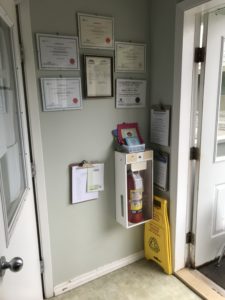
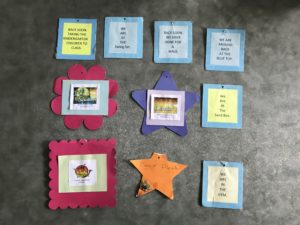
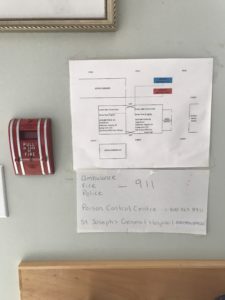
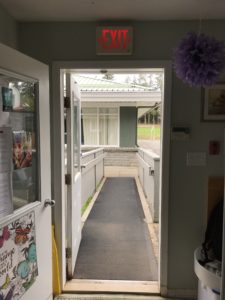

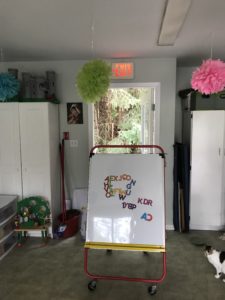
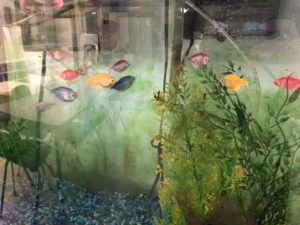
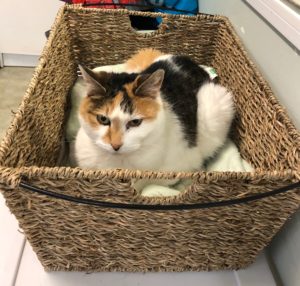
Above you can view our large calming fish tank and fish and “Tutti” our tabby cat. Our children love that we have pets who live in our centre. I love that our children can have the experience of having a pet, to care for Tutti, feed her, play with her, let her be when she is sleeping, name the fish, feed them, help clean their tank and be able to learn and understand empathy for their pets. When we are indoors having a heathy and nutritious snack I love to turn on some relaxing music, enjoy the nature light coming in through our windows, turn the fish tank light on to watch the fish swim around while the children and I engage in a conversation about what ever the children wish to talk about. When I hear a little friend giggle and is excited to share with us that Tutti brushed her leg, the comforts of security and another teacher, Tutti, are present in our centre for our children to benefit from . A safe, healthy, play to learn happy environment.
Examples of Documentation: Direct
Daily Checklist Checks and Inspection Checks Booklet Created By Juanita Phillips-Bell
Ratio of Staff to Children Created By Juanita Phillips-Bell
Parent’s Handbook Amendment Oct 2nd 2020 Created By Juanita Phillips-Bell
ECC 125 Outdoor Environment Partnership Assignment
Photos below are examples of the environment designs I draw for our outdoor environment assignment. You can view more designs on my Play to Learn page.
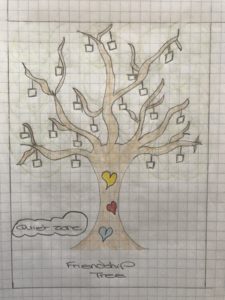


Sculpture Exploration and Learning Plan 2019


Examples of Documentations: Indirect
ECC 141/142 Course Presentation by Nilda Cosco – What Nature Teaches Children
Licensing Officer Stephen Morgan Letter August 2020
Introduction to Yoga Therapy for Kids
Math & Numeracy for Early Years Training Oct 2020
Nutrition in Childhood – Developing Healthy Eating Habits in Children
Crafts and Activities for Children Dec 2008
EpiPen Session with Health Nurse Nov 2008
Seizure Awareness Workshop Oct 2008
2. Working with the staff the student will plan and implement developmentally appropriate programs that meet the observed needs of children by:
At our centre we love to hear, see, touch, smell, taste and observe what our children and staff/educators are interested in. We work as a team to allow everyone to express their interests and ideas in fun, play, and creative learning ways. As we play all day long we are encouraging a healthy style of development for the whole child.
Development and Appropriate Program about Connections
Last spring the children expressed an interest with hand puppets, so we followed their lead and asked them questions to understand what they knew about finger/hand puppets. Together we made a web map of everyone’s knowledge. Here are a few comments I remember from our discussion – “puppets have silly voices”, “they are not real”, “on sticks”, “a puppet can be naughty”, “you can make them go crazy”, this last comment, I giggle, as I recall the memory of my little friend moving her full body in an uncontrollable dance. I am still giggling. . The children led us with a farm animal focus as it was spring time and some of our children had baby chicks at their homes. With the combination of finger and stick style puppets the children created their own little chick. When we set up our spaces/zones/areas we thought about how the children could incorporate their puppet with their play. It was exciting to see and to hear how the children included their puppets when engaging in explore and experiences – the puppets were climbing up the tower of blocks, some puppets enjoyed or not enjoyed the taste of the strawberry play dough pie, play – puppets became the baby chick in dramatic play , puppets interact with other puppets, and our shy little friends found a voice through their puppets. Linda brought in a hand puppet, a brown farm hen which the children named “Chick.” Chick still continues to join us throughout our day with stories and she is adored by us all. Through our learning and discoveries of the finger/hand puppets the children’s learning, development and skills expanded:
- fine motor skills
- emotional awareness
- confidence
- conflict resolution
- imagination, role, modeling, creative, and pretend play
- speech and language skills
- behaviour skills
According to Jean Piaget theory, puppet play helps young children develop creative and cognitive skills by forcing them to use their imaginations. They make up the roles, the rules, the situations and the solutions. It is through imaginative play that children come to understand the differences between fantasy and reality. The real world becomes more real to children who have opportunities to pretend.
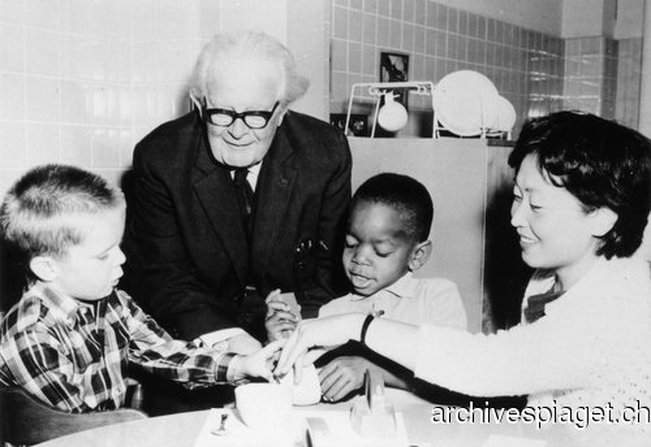
Photo retrieved from:
http://languagesofthechildren.weebly.com/through-the-eyes-of-jean-piaget.html
Photo retrieved from:
https://www.sciencesource.com/archive/Psychologist-Jean-Piaget-Teaching-Children-SS2299368.html
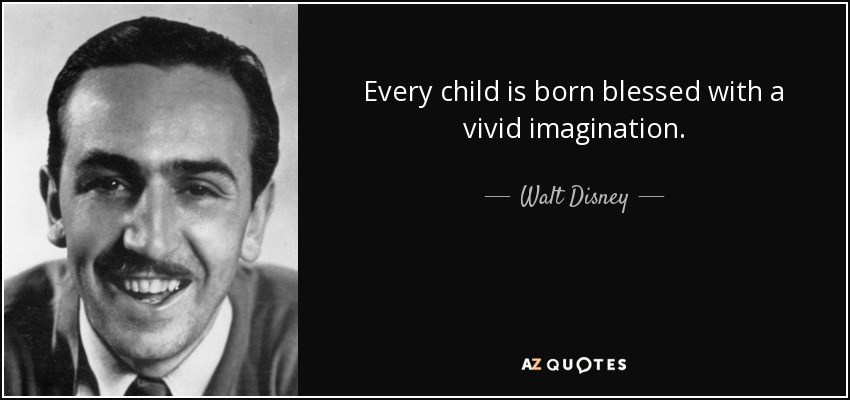
Our finger/hand puppet baby chick interest led us to a Huband Park Elementary teacher’s classroom to visit, watch, hear, and see chicks hatching from their egg shells inside their incubator home. Next we participated in a mini barn tour with the “Poultry in Motion” program. The British Columbia Chicken Marketing Board had all our children engaged with their big red trailer that looks and works like a mini chicken farm. An experience we all enjoyed.
Below are some examples of our finger/stick puppets we made and our centres brown farm hen hand puppet “Chick.”
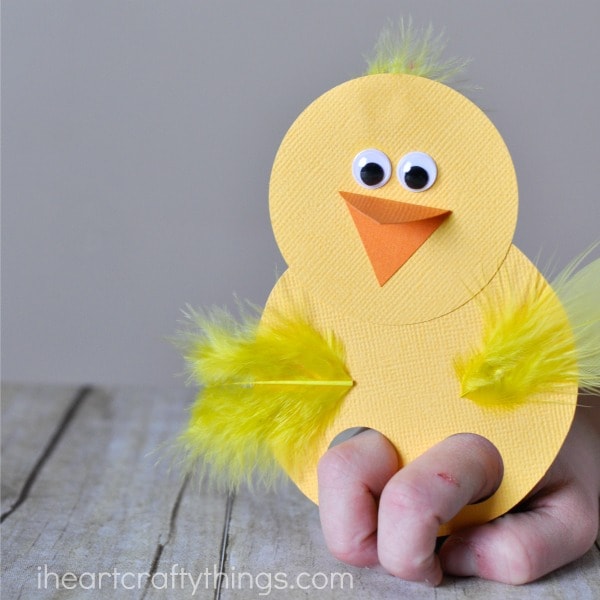
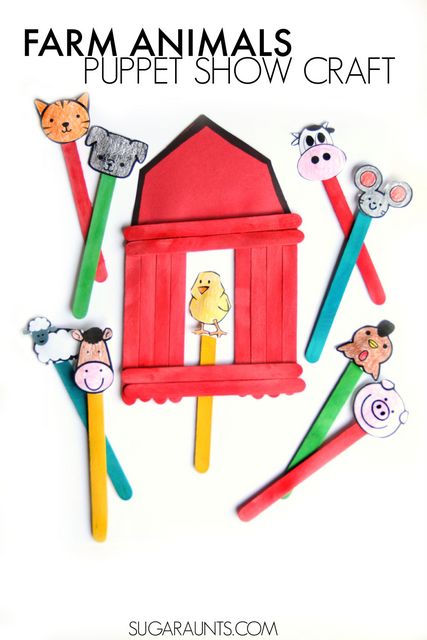

http://bcchicken.ca/consumer/poultry-in-motion-2/
After a fun day talking, exploring, and learning about baby chicks, “Chick” (our hand brown hen puppet) and I would sing together with the children our 5 Little Chick song. Some of the children enjoyed singing and perking with their finger puppets too.
Examples of Documentations: Direct
ECC 125 – 5 Little Chick Song and finger puppets I made to add to my Music and Movement Collection.


Examples of Documentations: Indirect
Math & Numeracy for Early Years Training Oct 2020
Children and the Art of Imagination May 2009
Creating Positive Relationships with Children through Visualization May 2009
Effective Circle Times Feb 2009
Painting Art Exploration and Learning Plan 2019 (1)
3. Working with the staff the student will nurture children to promote positive development by:
“Only through freedom and environmental experience
is it practically possible for human development to occur”
Maria Montessori
Nurturing young children in a way to promote positive development is an amazing gift to have and to give. Teaching preschool children is a passion I love to engage in. As much as I am teaching the child/children they are also teaching me a trick or two. I view our time together as a teaching and learning partnership while learning through play, exploring, and experiences. We are both the teacher and we are both the learner. Our worlds are filled with wonder, inquires, curiosity and creativity. A positive environment for all children to develop, gain knowledge and have fun in.
It is important to me to show and model respect, empathy, to share, and to be consistent and fair with all my children. As the golden rule says “Treat others as you would like others to treat you”. My day may be filled with the following reminders “be safe, be respectful, be responsible and thank you!”, I believe theses daily supportive reminders to be empowering for our children, which helps them to learn the “three base foundations for social and behavioural rules and laws in democratic society. Teaching the children to respect the rights of others, protect their bodies from unnecessary risk, and avoid unnecessary damage to the environment.
- Be safe! Go down the slide feet first
- Be respectful! Wait for your turn
- Be responsible! Put your trash in the trash can, not on the ground
- Be safe! The fence is not safe for climbing. The fort is safe for climbing
- Be respectful! Please wait for your turn on the slide
- Be responsible! Please take a paper towel and wipe up our spill
- Thank you for being safe. “You waited so patiently for your turn.”
- Thank you for being respectful. I heard you say “Excuse me.”
- Thank you for being responsible. You put your blocks away”
(Miller. D.F. 2013. p. 15 – 16).
When guiding and nurturing children to encourage positive development through play, exploring, and experiences with wonder, inquires, curiosity, be safe, be respectful, and be responsible I believe it is important for an educator to have the following skills, to be:
- Respectful
- Honest
- To be open and mindful of my own bias and opinions
- An effective communicator
- Clear with my expectations
- An attentive listener to understand the child’s needs
It is also important to be close, face to face, and on the same eye level with the child, to express non verbal gestures such as nodding and smiling, encourage the child to expand their thoughts by prompting with verbal responses, to be patient and to allow the child to complete what they are saying and to express empathy.
When communicating with a child I feel it is best to communicate in a positive manner, to be tactful and sincere, to have a balance of consistency and flexibility, to use appropriate language and understand the mental and emotional ability of the child. Communicating this way, I hope both the child and I are on the same transactional process channel, allowing both of us to understand our sending and receiving messages to one another.
A communication style that is fun and I like to add in silly voices and be very over dramatic is role playing with another educator. Here we will play out scenario’s for the children to view the inappropriate way of handling a situation e.g. behaviour, an incident, a non resolved conflict, I do not like you scenario. By capturing the children’s attention they clearly see the inappropriate message we are demonstrating. After our role playing, we discus the scenario with the children and together work out a solution. Next we give an opportunity for the children to role play the scenario with the appropriate behaviour. Most of the time we have so many volunteers, I wonder why? Play to learn can be so much fun!
- A positive role model
When I model and practice the above skills children can:
see how I interact with others in a respectful, caring and kind manner
see my positive non verbal and body language
hear the tone, volume, pitch, speed, and articulation of my voice
hear guiding and nurturing language
see myself as a comforting and participating member of our classroom community
When providing positive guidance and a nurturing connection from myself with a child/children will promote positive development. Through a play to learn lens – play, exploring, and experiences with wonder, inquires, curiosity, and an understanding of how to be safe, respectful, and responsible will enhance a child’s learning, skills, abilities, and knowledge.


Examples of Documentations: Direct
Some examples of my cue cards I use to help my children to understand their voice and/or body speed rate, the differences between the teacher’s jobs and children’s jobs and Take 5 cue cards to help a child/children to self regulate and to self focus.

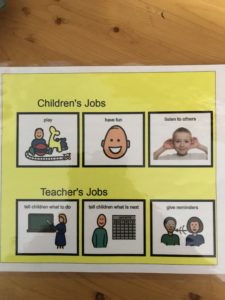

Examples of Documentations: Indirect
ECC 141/142 Course Presentation by Marc Battle – WE ARE WARRIORS
ECC 168 Health Promotion Assignment Brochure – Mindfulness Meditation
ECC 168 Mindfulness Meditation ELP
Examples of what our mindful glitter jars look like –

Reference
Miller. D.F. 2013. Positive Child Guidance, Seventh Edition. Wadsworth, Belmont, CA,USA.
4. Supporting families by: and…
5. Students will support staff by sharing information appropriately, and assisting where possible in cooperating and coordinating efforts with other community services by:
I have combined competency functions 4 and 5 together as I feel strongly about all of our centres members being equally important and gain greater connection, trust and respect through our Center’s Circle of Connections.
Center’s Circle of Connections
Child
Family
Educator
Community
J.P.B
I believe, when I have the wonderful opportunity to enroll a child in our centre, I am also enrolling the child’s family and their extended family members too. I invite and encourage all family members to be a part of our center’s community. When supporting, sharing, assisting, cooperating, coordinating, and being appropriate with all children, family members and staff members we are connecting a class room culture with the child and family’s culture and diversities to create a seamless environments for the child’s learning, for the family’s comfort levels, and for a well balanced early childhood educator education team.
When a family walk’s into our centre it is important to my staff and I to welcome the child and family with warmth, an open mind, and for family members to feel welcomed, which is a reflection of how my staff and I interact with one another. Through trust, respect and honour, cultural response, being present and real, accepting to all different backgrounds and walks of lives, using a variety of communication skills and flexible engagement, my staff and I show the child and their family our building blocks to developing a connection with one another and open the door for relationships to grow. Providing each family a sense of belonging and reassurance their child is going to be well cared for, understood, and both the child and family will be respected and honoured.
Together, the child and family, and the educator relationship builds with an inclusive, willingness and positive manner, we the educator’s and the child’s parents – child’s 1st teachers, and extended family members, we are building a power gift for the child, a gift of support, a positive partnership between their family and our educators, which will encourage successful learning outcomes for the child in a trusting environment. Together child, family, educators, side by side and over lapping our own worlds together we enhance and expand the child’s world around them. Together be become “a triad of players” (Dietze. B, & Kashin. D. 2016. p. 171).
It is valuable to me when playing; educating and providing knowledge to our children it is just important and valuable to educate, provide knowledge and resources for our families and for my staff members. When a family and staff members understand our play to learn philosophy, our strategies, how it works, why it is important, where it begins, what the child is learning and who is involved – all of us, are able to learn through the child, the family and staff members their strengths and challenges and how the child’s, family and staff members day flows . It allows the child to feel connected to the educator, the educator to feel connected to the child, and educators to feel connect to other educators, which then flows around in a circle to the family feeling connected. This connection of learning and the knowledge of play to learn can continue and be enjoyed in their own family homes. “Play is fun, exciting, adventurous, and open-ended. Play is creative, spontaneous, magical, complex, rewarding and stimulating. Play is non-judgmental, child directed, and full of choices” (Dietze. B, & Kashin. D. 2016. p. 171).
As an educator, when I reach out to a family and communicate, either verbally, non-verbally, e-mail, phone call, one to one conference, white board with highlights of the children’s day, updating posts on our Face book blog, allowing families to volunteer their time in class, now with changing times – virtually, and communicating the good the bad and the ugly of the child’s day in private, I am giving a play by play image for the family to envision and to be in tune with their little ones day, their progress, what engages and excites them, and areas we all can guide the child with support to help the child through challenging times. As time goes by and the family can relate to my communications at home, by seeing their child’s play, development, growth, overcoming challenging times, in return the family trusts our relationship to then ask me questions about their child’s learning or what they can do at home to help their child. This amazing, cooperating and trusting relationship greatly impacts the child’s success in learning and developing, and the family’s own learning, knowledge, and confidence increases, and they choose to stay connect to their child’s learning journey.
When training and guiding my staff members, I value each educator as a family member to myself and our centre. When engaging in our practice of our play to learn philosophy, in a setting of comfort, warmth, love, secure, fair and respect it creates a positive learning environment, with a feeling of being home away from home. Sometimes our centre is the only constant loving home a child may have and for that reason I strive hard for all my children to feel they are important by all staff members. When a child has many positive influences around them their own world around them becomes larger and richer.
Professional supporting, sharing, assisting, cooperating, coordinating, listening, and being appropriate with all my staff members, it allows each educator to feel appreciated and valued. We can then build blocks to be on the same page and to know and understand the centres philosophy, priorities, programs, our strengths, our own challenges, reflect as a team and as individuals. With respect we can be open minded, be a critical friend, be a mentor, and learn from one another. Together as an educator team we empower one another while building a trusting environment to be able to express ourselves and become comfortable to show our real, transparent, and vulnerable sides to one another to create a deeper level of trust. A trust our children and families also see and feel.
When the time raises to discuss a child’s individual, unique, challenging behaviour and or assistant needs, myself and another educator or all of us in a educator team setting will respectfully and privately observe and review the situation. Here my “cycle of professional practice”, my practice in “critical reflection”, “reflection and the programming process”, along with “bringing clarity to practice” and “theoretical language” (Dietze. B, & Kashin. D. 2016. p. 3. 7. 10. 265. ), will guide my to see, hear and feel a deeper understanding level of the situation. Along with hearing the voices of my co-educators, the child and the child’s family. An image I have is of many bubbles with the child being the centre of all the bubbles. Each time a bubble connects with the child a powerful action responds to the child’s and family’s individual needs. When I and/or my co-educators feel it is our responsible to reach out to a community service to help the child and family, I/we will follow through with this level of support by providing the family with information, or make connect with the services on be half of the family with their permission. E.g. hearing,, speech, behavioural, food bank, hospitalization, mindfulness practice etc. If the time every arises in a situation to contact community services without the families permission, due to the best interest of the child’s well being, I/we will not hesitate to make these calls. E.g. child abuse or neglect.
I truly believe in my own image of our centre being a circle of trust, connection, and respect involving the child, their family, and our educators around our heart of warmth, love, secure, and fairness. When we all participate in this supporting circle of connections the doors open to increased learning, development and knowledge growth. When a child and or a family member and or an educator are struggling I am able to professional, confidently and privately offer the many resources I have and community services I am connected with to support and help us through this challenging time. Seamlessly I am able to help the one in need of help due to the trusting relationship we have. Honesty comes into play when I do not have a suggestion or solution for my one in need, however I will always let them know I will do my best to support them and work on learning more to help them. When continuing to support, share, assist, cooperate, coordinate, and being appropriate with all my children, family members, staff members and community members our Center’s Circle of Connections continue to stay strong, develop and grow into rich relationships.
Centre’s Circle of Connections Handbook Nov 2020 Created by Juanita Phillips-Bell
Center’s Circle of Connections Resources
All of our resources are available for all children, families and staff member’s to engage in. Below are some examples of our centres resources.
Child Related Resources:
Book – 2015. “Stick and Stone” A book about empathy and friendships.
Author – Beth Ferry
Illustrator – Tom Lichtenheld
Read aloud book –
Activity – Trace your hand and the child’s hand on a piece of paper. Then allow the child to trace their other hand and your other hand on the piece of paper. It is super fun and full of giggles and sensory experiences if one or both of you are sensitive to having your hands traced. This is a nice activity to introduce the feeling of connection as you trace and color together. You may either continue to color the whole picture together, or allow the child to take over the decorating. Enjoy your time together. Remember not to rush through the activity and to be mindful of the many moments you both share together.
Brochure – ECC 168 Health Promotion Assignment Brochure – Mindfulness Meditation
Website – 2020. Play to Learn Preschool, with hosts Jamie White and Gemma Kenworthy. https://playtolearnpreschool.us/
Ted Talk – 2008. Serious Play: Play is more than just fun – presented by Dr. Stuart Brown, play researcher.
Ted Talk – 2013. I think everyone needs a pep talk – presented by Robby Novak, aged 9.
Family Resources
Book – 2016. “The Sharing Circle” A book about sharing.
Author – Theresa Larsen-Jonasson
Illustrator – Jessika Von Innerebner
Read aloud book –
Activity – Take photos of the adults who are part of your young child’s world, mom, dad, siblings, grandparents, daycare/preschool teachers, soccer/gym coach’s etc. You and your little one can take turns at being the photographer, to make memorable moments and connections of the people in the photos. Then together make/buy a photo book to place the photos in to create a book of trusting adults in your child’s life.
Brochure – ECC 116 Hospitalization Handout – Children and Stress Assignment
Website – 2020. Play to Learn Preschool, with hosts Jamie White and Gemma Kenworthy. https://playtolearnpreschool.us/
Ted Talk – 2014. 5 Connections that will change children’s lives – presented by Dr. Laura Jana, pediatrician.
Staff Related Resources
Book – 2019. BC Early Learning Framework.
https://www2.gov.bc.ca/gov/content/education-training/early-learning/teach/early-learning-framework
Book – 2019. BC ELF: A Guide for Families.
https://www2.gov.bc.ca/assets/gov/education/early-learning/teach/earlylearning/elf-a-guide-for-families.pdf
Activity – Building a block tower together is a fun, interactive, cooperative, and communication experience. It also allows many exploring questions to be asked, played out and answered e.g. how tall is the tower going to be, what are the best blocks to place at the bottom and why. How making a large base is important for the stability of the tower and so on and so forth. Through this short or long time play experience, together your are connecting and building a relationship.
Brochure – Centre’s Circle of Connections Handbook Nov 2020 Created by Juanita Phillips-Bell
Website – 2020. Play to Learn Preschool, with hosts Jamie White and Gemma Kenworthy. https://playtolearnpreschool.us/
Ted Talks – 2013. Education: Every child needs a champion – presented by Rita Pierson, educator.
Community Resources:
Book – 2019. BC ELF: A Guide for Families.
https://www2.gov.bc.ca/assets/gov/education/early-learning/teach/earlylearning/elf-a-guide-for-families.pdf
Support/Activity – Comox Valley Child Development Association
Brochure – ECC 163 Young Parent Program Brochure
Website – BC Centre for Disease Control – BC Ministry of Health, 2020.
http://www.bccdc.ca/
Ted Talk – 2018. Bite-Sized Mindfulness: An Easy Easy for Kids to be Happy and Healthy – presented by Kira Willey.
Example of documents: Direct
ECC 168 Health Promotion Assignment Brochure – Mindfulness Meditation
ECC 168 Mindfulness Meditation ELP
ECC 116 Hospitalization Handout – Children and Stress Assignment
ECC 163 Young Parent Program Brochure
Centre’s Circle of Connections Handbook Nov 2020 Created by Juanita Phillips-Bell
ECC 136 My Tree of Life Poster
ECC 136 Journal Assignment – Part One 2020
ECC 136 Journal Assignment – Part Two 2020
Example of documents: Indirect
Introduction to Yoga Therapy for Kids
Sending our Children to School May, 2020
Health and Healing in Troubled and Changing Times May, 2020
Building Bridges Through Understanding the Village Experiential Workshop
6. Develop yourself and contribute to the development of others to meet current and future needs by:

I am a strong believer for one to continuously increase one’s self by gaining more knowledge, understandings, development and for one’s own well being to be healthy. One’s own world and the worlds around them and for me personally, the world of my members involved in my center’s community have a large impact on one’s life.
Including all of the above and our own global world, I try my best to maintain a balanced life – family, work, and life – have an open mind and for my own well being to stay healthy. One’s own well being is the most important key to being able to engage in gaining more knowledge, clear understandings, development and for one’s own well being to stay healthy. As you read you may have noticed I have repeated many times “one’s own well being”, for when I feel healthy and balanced I am then able to absorb the learning experiences in the environment I choose to place myself in. Weather that be in the environment of my own home and with my 2 amazing sons and family, weather it be in the environment of my centre surrounded by children, families and staff members, weather it be in the environment of my college mates in our virtual classroom, weather it be in the environment of ECEBC agm meeting, weather it be in the environment of a fundraiser, or weather it be in the environment of my functional neurological disorder progress sessions, I am surrounded by many opportunities to learn and when I am healthy, I can then connect many neurons to wire to together to fire together to focus on these amazing opportunities. When present and in the moment I am able to stay engaged, connected and current with my learning. Gaining knowledge which helps me to understand a topic, situation and the unknown areas that are right in front of me. To then evolve into strategies to improve my own development and well being consciously and unconsciously. Exploring my own world and curiosities increases my development and when I embrace other’s worlds and the global world around me my own development, knowledge and learning is enhanced and becomes richer.
Through continuously learning I feel I can gain and give more cognitive social, emotional, physical, spiritual and communication knowledge/education support to myself, my family members, and my centres members, to community members and to life. Not only am I developing myself I am helping and supporting development in others.
Examples of documentations – direct
Unofficially Transcript – Juanita Phillips-Bell Dec 2020
Examples of documentations – indirect
Parent and Co-worker letter Jenna Phipps August 2020
ECEBC AGM Meeting Attended Sept. 14th, 2020
7. Have a clear understand what contributes to the effective management and administration of child care services by:
Effective Management
“Happy Educator Team Creates a
Happy Preschool – Daycare Centre” J.P.B.
I believe in creating an open minded team environment for management to be effective and successful. As I outlined in competency functions 4 and 5 it is important to me for my educator/staff team members to feel safe, listened to and valued, with support and opportunities to grow and develop professionally and personally. For all my staff members to feel a strong balance of good health, well being, respect and to know we are a team working, learning, and teaching together in partnership relationships.
When I am wearing my facility manager’s hat, one hat of many in my early childhood professional world, I keep in mind my own responsibilities and role modeling duties – supporting, sharing, assisting, cooperating, coordinating, listening, appropriate and praising my staff members. Creating and cementing good work habits and behaviours and at the same time valuing my team. Surrounding ourselves with meaningful and detailed moments goes a long way. Even when I am being a critical friend or scaffolding a learning opportunity with a staff member it is important to me to use direct, clear, open and engage in ongoing communications, positive language and to be real with expectations. The support and learning my staff receive from myself is also the support and learning they teach and give to one another, our children, families and community service members within our centre. I strongly believe in the golden rule…
“Treat others as you would like others to treat you”
As educators we all notice when it is time for a little one to have their own space and time to reflect, renew, regulate and recharge themselves. So it is even more important for my staff members to receive the same opportunities to have their own space and time to reflect, renew, regulate and recharge themselves. The day to day demands for all staff members involved in the running of our centres daily operations also involves high energy, loud sounds, needs of others, standing – sitting – moving all day long and cognitively on alert with the children’s safety. We are on the go from the time we leave our own family home, still on the go at the centre, until we can relax in the comforts of our own home. Mentally and physically on the go! By looking after my staff members I hope for less burn out and strive, encourage, and support happy long term employment for my staff members. I try my best in making a difference in many lives in big and little ways.
By providing documentations, onsite training, promoting course related information and encouraging my staff members to engage in all the resources I have to offer, I feel it gives everyone an opportunity to enhance and expand their our development, knowledge and learning experiences.
Examples of documentations – direct and correspondence I have available/or created for my staff members:
Facility Manager – Linda’s After School Care May 2018
Parent’s Handbook Amendment Oct 2nd 2020
Centre’s Circle of Connections Handbook Nov 2020 Created by Juanita Phillips-Bell
Examples of documentations – indirect, courses and webinars I have engaged in and wish to share with my staff members to share the knowledge of what I have learnt:
Employer Letter Linda Watson August 2020
Introduction to Yoga Therapy for Kids
Sending our Children to School May, 2020
Learning to Embrace and Explore Covid Restrictions with Let’s Talks Science Nov 2020
Health and Healing in Troubled and Changing Times May, 2020
Administration Responsibilities
Duties I engage in:
Lead and oversee all operations in our child care centre facility
Supervise and manage staff, interviews, hiring and training staff
Organize staff meeting
Provide up to date professional development course information
To oversee the recourses I have on file for our centre, children, families and staff members are up to date and current
Required documentations to be visible and on display in our centre
Meet with children and families
Communicating parent handbook, child care fees, method of payment and due dates with families, and emergency comfort kits, safety drills – fire, earthquake, hold and secure, lockdown, government public documentations, health concern notice, and wildlife notices
Continue to stay in connect with families via phone call, text, e-mail, video meeting…
Handle conflict resolutions
Develop preschool education programs and curricula
Be up to date and current with Canada and the global world’s education perspectives
Budget programs and facility needs
Responsible for equipment and material purchases, paying bills, and administrating payroll
Have up to date learning frameworks and other supporting documents for educators
Comply and to be current with Licensing Regulations, have a positive, open minded learning and successful relationship with our licensing officer
To oversee the health and safety checklists are maintained and up to date
Establish protocols, policies and procedures
Maintain up to date and current registration forms for all staff and children and families
Cooperative relationship with our school district 71 and Huband Park elementary school
Organize staff social gatherings
Organize centres celebrations – birthday, Christmas, preschool program graduation etc…


Have up to date and current government child care documentations
e.g. public policies, standards, act, bulletins and child care documentations across Canada…
and government funding programs supporting our facility, staff, child and family needs
e.g. child care operating funding, ece wage enhancement, child care fee reduction initiative, child care BC maintenance fund, child care health and safety grant, affordable child care benefit…
To maintain enrollment in government programs and submit monthly reports
To be in contact and up to date with community services
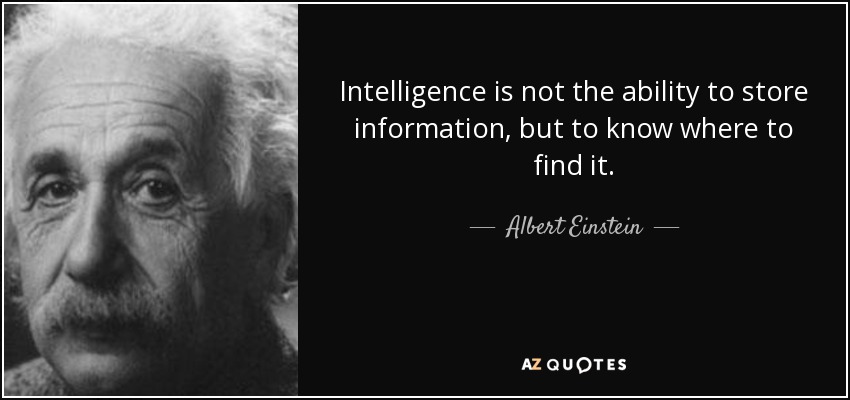
Examples of documentations I have created for our centre – direct
Daily Health and safety Checklist
Grad Pre School Program Grad Set UP
Examples of documentations – indirect
Licensing Officer Stephen Morgan Letter August 2020
EpiPen Session with Health Nurse Nov 2008
8. Advocate for a high quality, accessible and comprehensive child care system by:
Friday August 14th, 2020, I had the great please of talking with Charlene Gray about her life’s journey and continuing journey as an ECE and ECE advocate. Through talking, sharing our own ECE experiences and listening to her I was truly inspired to learn more about ECE advocacy in a deeper understanding and interest level.
I had heard about the $10a Day Child Care Plan years prior; however I did not pay attention to the plan as our day care centre was already offering $10.00 a day child care fees. We became known as one of the affordable centres in our community and had a wait list years long. Linda (owner/operator) and I strongly believed in offering an affordable and high quality child care centre. We both chose to accept a low income wage with no benefits in order to help our community’s children and their families to have a safe, happy, affordable and high quality centre where they could have the experience of being at a home away from home environment. Still today our child care fees are affordable, care is of high quality, the children are happy and safe, our families feel they belong, and our staff love their working environment.
“Six years in the making, Charlene Gray, Comox Valley, BC, together with a team of dedicated members, patience, through listening and learning, sharing real life stories through the lens of a parent, staying committed and being persistence with our community, province, and government was the beginning of her advocating journey with the “Communities $10aDay Child Care Plan” which unfolded and developed. “Together they made history. Affordable child care in BC is on its way” ($10aday.ca). Since 2011, supporters across the province had advanced and advocated the Community’s $10aDay Child Care Plan as the solution to BC’s child care chaos. In February, 2018 the BC government introduced it’s Child Care BC Plan in response to this chaos. The 2 Plans have shared goals – reducing parent fees, increasing educator wages and education, and creating more licensed spaces that meet diverse family needs. Now, Plan supporters are tracking progress and taking action to ensure that every step leads us towards a universal, high quality, affordable child care system” ($10aday.ca. About the Plan: Government’s Response, BC Government). Charlene today continues to be committed to this child care plan. And it all started from the hearts of educators, parents and our community discussing the question of affordable child care. I asked Charlene how I can learn more about this plan. Inside my mind this plan was checking off boxes, questions and concerns I have about affordable child care fees, all children deserving high quality daycare programs, programs to be licensed and governed, educators to be recognized as essential and professional members of our community, province, and country, continuing support for our educators and to be paid according. Charlene expressed by talking with her and sharing our child care system concerns I was already advocating and Charlene was listening to my voice. My voice was being heard. Charlene kindly gave me the website address: https://www.10aday.ca “ ( Phillips-Bell, J, 2020, para 26 – ECC 136Advocatay assignment) and on that day Friday August 14th, 2020 my own child care system advocacy journey begin.

As I continue to stay connected with the development of the $10aDay Child Care Plan, which was launched 9 years ago, I am learning and understanding the benefits/rewards that my own centre has received from Charlene and her dedicated team of the Plan Members and Supporters. Sharing their voices with our own community, province and our countries government, finally in 2018 the BC government’s Child Care BC heard what they had to say. The $10aDay child care plan was implemented for child care providers centres/facilities – “licensed and unlicensed, centre-based, multi-age, and family, not-for-profit and for-profit” (Coalition of Child Care Advocates of BC, $10aDay.ca, 2018). Child care providers were also given an opt-in opportunity to apply for the Child Care Fee Reduction Initiative funding program. A funding program Linda and I chose to opt-in to; to support our children and their family’s affordability needs for child care. At the same time, we could show to our government our support for the need of the Child Care Fee Reduction Initiative by applying and participating in this new and exciting funding program and today we continue to participate in this funding program. We and our families greatly appreciate the child care sector being supported by our government.
https://www.10aday.ca/
Next, in January 2019 our centre chose to opt-in the Early Childhood Educator Wage Enhancement funding program. Finally our education knowledge, dedication, strengths, and career commitment where being recognized and valued. At that time two out of three of our staff members were eligible, due to certificate qualifications, to receive the wage enhancement funding. I am the third staff member and when I return to work at our centre I too will be eligible due to completing my certificate in Early Childhood Care and Education this December 2020. I am proud to say out of the six staff members we now employee at our centre, three of us have completed our certificates in Early Childhood Care and Education. We and the rest of our team continue to expand our professional development through supporting one another and enrolling in courses, which allows us to continue with providing high quality care for our children.
https://www2.gov.bc.ca//assets/gov/family-and-social-supports/child-care/6337_earlycareandlearningrecruitment_andretentionstrategy_report_web.pdf
Another area I feel was heard, seen and supported by our government was the lack of qualified early childhood educators. Summer 2019 I applied for my first ECEBC ECE Bursary as the government, January 2019, had addressed and committed to another promise they made, to help with the BC child care chaos, funding for students enrolled in the Early Childhood Care and Education programs. Funding I much appreciated and grateful to received throughout my early childhood care and education college studies. As I complete my certificate, I hope in the 10 year plan bursary funding will be available for my diploma education and to encourage many more students to enter the child care education field. High quality care is now on its way to help educate, guide, support, with positive influences for many more of our young Canadian citizens who will become enriched with strategies to navigate problem solving, critical thinking, understanding values, confidents, and will be empowered with strong roots of self esteem, empathy and a sense of belonging to be able to connect and build relationships with worlds around them. Let’s hope the government continues with their promise to support the child care existing and new educators.
https://www2.gov.bc.ca/gov/content/family-social-supports/caring-for-young-children/child-care-strategy
As these positive changes continue to unfold, how do we increase the number of affordable and high quality child care spaces? This is a question I am still curious about. Last I heard there was talk and ideas of BC elementary schools being provided with a building to be placed on site of school grounds. Our center “Linda’s After School Care” is located on the grounds of Huband Park Elementary School. Linda was one of the first child care centres in our Comox Valley to have the ability to be on site of an elementary school grounds. Her centre originally started in a class room of the school. When Tsolme Elementary School merged into Huband Park Elementary School, Linda relocated her child care centre to her privately owned and operated bungalow building. The building was constructed by Vanier grades 11 and 12 trade students and positioned by the school – centres front door entrance to the schools back door entrance approximately 50 feet in distance, creating a community feeling between our centre and the school. Our before school care and after school care programs help many Huband Park Families. We provide the families a seamless transition between our centre and the school for their and their child’s needs. We offer a preschool program during school hours and many younger siblings attend and become familiar with the “Big” school – Huband Park before they start kindergarten. A system that works extremely well for our family needs. We are already advocating and role modeling the idea the government maybe implementing in the future.
However, how will this work with a government operated child care centre? Does this allow the school aged children’s younger siblings to attend a preschool in the building during school hours? Can they be joined with their older sibling during after school hours? How would this scenario work with government child care licensing regulations? Would the early childhood care and education certificate educators be given the first opportunity to staff the preschool hours? So many questions I have, which leads me to connecting with community members to learn and to understand the move to increasing the number of affordable and high quality child care spaces.
“Over the last 3 years child care fees have been reduced for 60,000 families and of those, 32,700 families are paying $10 a day or less. Early childhood educators have been receiving a wage top-up of $2 per hour, and funding for 20,000 new spaces has been confirmed” (Gregson, S, 2020. BC Election: Media Release on Child Care. Retrieved from $10aday.ca). The start of changing times for BC’s child care history timeline. Support provided by our government for our children, families, and educators in our centre and throughout our province – British Columbia. Changes to improve our child care systems to benefit all children and their families and child care centres and educators for a recognized, valued and brighter future.
The $10aDay Plan needs three things to work:

Affordable Fees

More licensed spaces

Better ECE wages
Examples of Documents: Direct
$10aDay Plan Letter to Premier John Horgan, MLA’s Carole James and Katrine Conroy Dec2020
$10aDay BC Recovery Letter to Premier John, Federal MP and Provincial MLA
Examples of Documents: Indirect
Take Action Supporter https://www.10aday.ca/
ECEBC Membership 2019 and Present
CCCF Membership 2020 and Present
